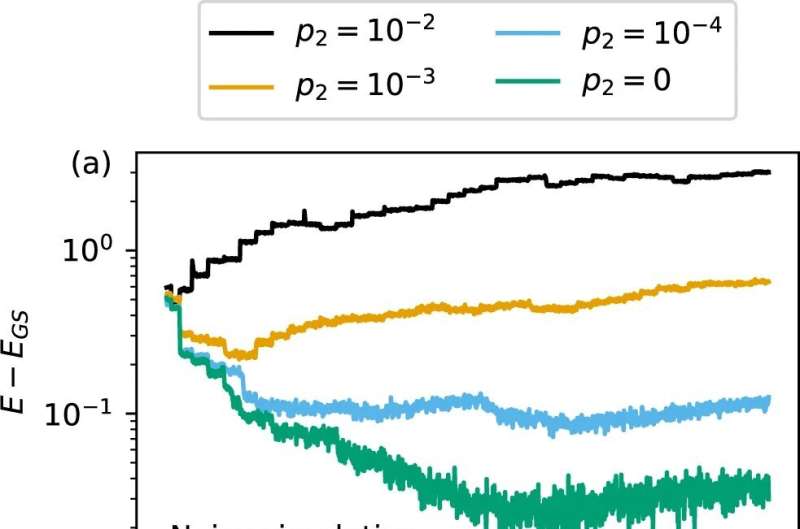This article has been reviewed according to Science X's editorial process and policies. Editors have highlighted the following attributes while ensuring the content's credibility:
fact-checked
peer-reviewed publication
trusted source
proofread
Scientists take an important step toward using quantum computers to advance materials science

A team of scientists from the U.S. Department of Energy's Ames National Laboratory demonstrated a way to advance the role of quantum computing in materials research with an adaptive algorithm for simulating materials. Quantum computers have potential capabilities far beyond today's computers, and using an adaptive algorithm allows them to produce solutions quickly and accurately.
Quantum computers have a completely different way of computing than the computers we use today. They are built of quantum bits, or qubits, which can encode much more information than the bits in today's computers. These unique capabilities allow quantum computers to make calculations beyond what is currently possible with classical computers.
A team of scientists at Ames Lab are working to harness the power of quantum computers to make materials research easier and more efficient. A primary research focus at Ames Lab is rare earth materials. These materials are used in a variety of technology, including smart phones, computer hard drives, light-emitting-diodes (LEDs), electronic displays, and permanent magnets for alternative energy technology, such as wind turbines.
Reliance on rare earth materials is challenging because they are expensive and limited in their geographic distribution. Scientists at Ames Lab are working to find alternative materials that can substitute for rare earths but are less expensive and more available. To accomplish this task, scientists need a better understanding of rare earths and their behavior in various materials and applications. Using quantum computers to aid in this research can potentially make the process more efficient and allow scientists to make advancements more quickly.
Yongxin Yao, a scientist at Ames Lab, explained that currently it is challenging to accurately simulate rare earth materials on a computer because of their complex electronic structure. The approach his team developed is based on impurity models, which describe magnetic impurities in materials. Additionally, these models take into account how the impurity interacts with the rest of the material and helps capture the electronic properties. Their approach also uses quantum embedding methods to simulate the bulk materials.
In this case, quantum embedding refers to a lower dimensional representation of the material. The scientists adopted a systematic way to simplify how the bulk material is represented to make these simulations possible. Using quantum embedding reduces computational resources, while maintaining accuracy.
"In order to reduce the error in our calculations, we need compact quantum circuits," Yao explained. "A variety of paths, specifically quantum circuits composed of a set of hardware operations, can move the system from an initial point to the final point you want to reach. Because of the error associated with each operation, you want the shortest path."
The algorithm Yao's team used is designed to automatically find shortest paths to reach the targeted state. He said that this work is an important step towards being able to simulate the whole systems of real materials. When this technology is fully developed, it can help material researchers discover and design new materials for specific purposes more efficiently.
"We have developed some adaptive way to construct compact quantum circuits for either static or dynamic simulations. This work is a first comprehensive application of the adaptive method for impurity models derived from real materials," said Yao. "So that's an important step toward real materials simulations on quantum computers."
This research is further discussed in the paper, "Comparative study of adaptive variational quantum eigensolvers for multi-orbital impurity models." The paper is published in the journal Communications Physics.
More information: Anirban Mukherjee et al, Comparative study of adaptive variational quantum eigensolvers for multi-orbital impurity models, Communications Physics (2023). DOI: 10.1038/s42005-022-01089-6
Journal information: Communications Physics
Provided by Ames Laboratory


















